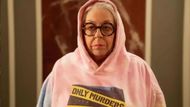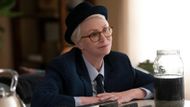Only Murders in the Building has become a favorite among comedy and mystery aficionados. The most interesting aspect of the show is that it combines both real true crime concepts and fiction. The creators did more than simply depict the scenario of three neighbors murdering each other—they also include hidden elements that relate to actual events and cases.
These details may be missed unless you’re familiar with real crime stories. The show’s subtle allusions challenge the idea that real sorrow is just entertainment. Some scenes are comic, while others are quietly reflective. Certain scenes are comic, while others are gloomy and contemplative. The relationships are cleverly constructed since they are not too obvious, adding a second layer to the series for those who pay close attention.
Disclaimer: This article is based on the author's opinions. Reader discretion is advised.
Here is the list of the 7 true crime references in Only Murders In The Building that only keen eyes would notice:
7. The Parrot Witness

In Only Murders in the Building Season 2, Bunny Folger’s parrot, Mrs. Gambolini, becomes a key witness to her murder. The bird reportedly repeats Bunny’s final words,
"I know who did it," matching a real-life event.
In reality, you might have heard about an African Grey parrot named Bud that watched the murder of its owner, Martin Duram, and repeatedly yelled,
"Don't Fucking Shoot!" in the victim’s voice.
The parrot first appeared in Season 2, Episode 1, when Bunny bequeaths it to Oliver in her will. She exclaims the same words, “I know who did it.” The parrot’s comments were considered potential evidence in Glenna Durham’s (Martin’s wife) 2017 trial but were not introduced in court.
The reference is subtle since the show does not clarify the actual case, allowing viewers to make the connection themselves. It may be familiar to true crime fans as a well-known instance of animals witnessing crimes. This has been added to the show because real life can be stranger than fiction. It also reflects how true crime media sometimes uses unusual facts to enhance the story, bringing both humor and critique to the series.
6. Steve Pankey and Podcast Obsession

In Only Murders in the Building Season 3, viewers might have missed a moment where Gregg Rivera is shown to be an obsessed podcast follower of Ben Glenroy. The podcast is based on an actual case in which Steve Pankey, a 70-year-old Idaho man, was accused of the murder of 12-year-old Jonelle Matthews. Viewers might overlook this reference, as Gregg seems like an ordinary fan. The show uses it to critique how some true crime enthusiasts engage with real tragedies. This demonstrates a genuine interest in the morality of actual crime entertainment.
The references illustrate how, in some cases, podcasts can foster unhealthy behavior in listeners. This makes it simple to overlook. It is present in the show to help the viewers remember that individuals affected by crimes are real people. It further enriches the narration of how the dark aspect of true crime fandom can be.
5. Making a Murderer (2015) Style Corruption

Detective Daniel Kreps’ dishonesty and incompetence emerge in Season 2, Episode 10 of the television show Only Murders in the Building. He is characterized as the aide of the true killer, Poppy White, of the murder of Bunny Folger in the show. This is analogous to a real crime documentary, such as Making a Murderer (2015), which exposed systemic injustices.
Most viewers did not notice the reference because the detective is framed as the typical roadblock for the main characters. The show does this as social commentary on the manner in which actual investigations can be mishandled. The public’s growing mistrust of police enforcement as a result of real crime documentaries is reflected in this.
The reference is understated, woven into the story without explicit explanation. It invites viewers to spot parallels with real cases. The show does it for realism and social commentary. It shows the reality that the truth can be nuanced within murder cases. This supports the show’s true crime genre because it comments upon real-world facts.
4. The Son of Sam Killer in Pop Culture

In Season 2 of Only Murders in the Building, Oliver plays a perverted version of the party game Son of Sam, demonstrating his flair for drama and deduction. When Oliver tries to solve Alice’s puzzles in the present, the game is re-examined after first appearing in a flashback from the 1970s. The game is named after David Berkowitz, who turned out to be the notorious Son of Sam murderer. Viewers might have missed this scene.
Berkowitz terrorized the city of New York in the late 1970s and killed not less than six people as well as other victims. Stacy Moskowitz was an exception to Berkowitz’s general interest in young women with dark hair. Oliver only has blonde victims in the version of the game that is played, which creates a startling contrast to the actual murders.
3. Lululemon Murder Case

From Season 2 of Only Murders in the Building, another character named Nina Lin appears as a quick-tempered and determined woman who is temporarily suspected of the murder of Bunny Folger. Nina’s appointment as the future chair of the Arconia board raises concerns due to her insistence on modernizing the organization, despite her elegance and poise. In one of the first-season episodes, Charles Jan, the serial murderer, refers to Nina as the Lululemon Gremlin, a snide remark with an unsettling implication.
Lululemon’s name invokes a disturbing real-life crime, despite its association with luxury apparel and lavish living. A coworker named Jayne Troxel Murray was viciously murdered inside the Bethesda, Maryland, Lululemon store by Brittany Norwood in 2011. Not only was the case shocking because of its violence, but also the manner in which it occurred in a brand that is associated with wellness and luxury was shocking to the public. A feeling of unease is also evoked by the show’s allusion, which suggests that there may be more going on beneath the nicely manicured exterior than meets the eye.
2. Murder of Sazz Pataki in Season 4

Viewers might have missed the murder of Sazz Pataki in Only Murders in the Building Season 4. The scene can be a reference to the name of a Russian serial killer, Georgy Martirosyan, or “Gosha the Magician.” Martirosyan was a self-described spiritual healer and magician who would entice young, would-be models to his apartment in Korolyov. There, he would give them drugs and make them overdose. He received a 23-year prison sentence after being found guilty of the three killings.
This scene might be missed, as it is brief and understated. The show often blends mystery, humor, and misdirection, so key moments can be easy to overlook. The creators also focus on creating tension by employing hints rather than obvious violence to ensure that viewers do not immediately realize the significance of Sazz’s death.
1. All is not Ok in Oklahoma Podcast

The podcast All Is Not OK in Oklahoma in Only Murders in the Building is a parody of actual true crime podcasts such as Serial and S-Town. This is a reference that many viewers overlooked in Season 2 since the podcast appears to be a mere plot device. The episode uses this to criticize how real-life disasters are commonly treated as entertainment in true crime podcasts.
This implies that the genre of true crime has ethical issues. It is not explained directly over the reference, making the viewers aware of the real podcasts to interpret them. This renders it simple to neglect. This is added to the show to challenge the ethics of commodifying real-life suffering. It gives some color to the story by revealing the darker side of the true crime stories. This renders the show more thought-provoking to true crime fans.
This TV show was not just a comedy mystery. It was a very covert way of conveying messages about what was right in a true crime narrative. Most of the references were not well explained to the extent that viewers had to relate them to real events. This provided the series with a stratified look. It was fluff and error up to a point, yet it also asked how one could eat tragedy as entertainment.
The blend of humour and serious commentary strengthened the hidden references. Finally, Only Murders in the Building was not a case-solver for all. It was also intended to show that there could be no crime fiction without a human cost.
